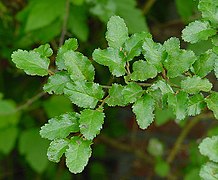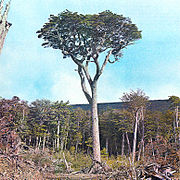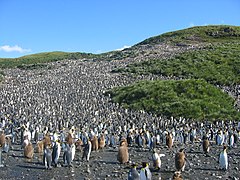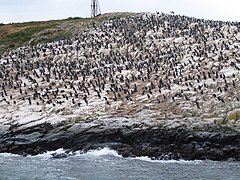Argaea: Difference between revisions
m (→Military) Tag: 2017 source edit |
mNo edit summary Tag: 2017 source edit |
||
| (10 intermediate revisions by the same user not shown) | |||
| Line 108: | Line 108: | ||
The '''Province of Argaea''', commonly known as '''Argaea''', is an over-seas province of [[Burgundie]], that encompasses the entire Archipelago of Argaea, in the southern interface between the [[Absurian Ocean]] and the [[Ocean of Cathay]], off the continent of [[Australis]].It is part of [[Burgundie]]'s [[Government of Burgundie#Constituent Countries|Burgoignesc Overseas Territory Assembly]]'s [[Geography of Burgundie#Argaea|Polar Burgundies]] geographic designation. It is home to 214,390 Argaeans. It's capital and largest city is Le Havre which also serves as the province's largest port facility. | The '''Province of Argaea''', commonly known as '''Argaea''', is an over-seas province of [[Burgundie]], that encompasses the entire Archipelago of Argaea, in the southern interface between the [[Absurian Ocean]] and the [[Ocean of Cathay]], off the continent of [[Australis]].It is part of [[Burgundie]]'s [[Government of Burgundie#Constituent Countries|Burgoignesc Overseas Territory Assembly]]'s [[Geography of Burgundie#Argaea|Polar Burgundies]] geographic designation. It is home to 214,390 Argaeans. It's capital and largest city is Le Havre which also serves as the province's largest port facility. | ||
Argaea is owned almost exclusively by the [[Government of Burgundie|government]] as it was initially settled in the 1880s and later annexed, in [[1927]], as a research outpost for the National Insitutes of Burgundie ([[Burgoignesc language|Burg]]: ''les Institues Nacional de Burgundie (INB)''). The INB, in conjunction with royal and national societies of various scientific studies managed the islands from [[1927]] until [[1973]], when a resort was established just outside of Le Havre, for soldiers, sailors, and marines on rest and relaxation from [[Operation Kipling]]. Even after the war there was interest in vacationing in the marine west coast climate, especially in the winter months when skiing and other snow sports in the winter, June to August. In the 21st century the tourism industry has quadrupled in size as [[ | Argaea is owned almost exclusively by the [[Government of Burgundie|government]] as it was initially settled in the 1880s and later annexed, in [[1927]], as a research outpost for the National Insitutes of Burgundie ([[Burgoignesc language|Burg]]: ''les Institues Nacional de Burgundie (INB)''). The INB, in conjunction with royal and national societies of various scientific studies managed the islands from [[1927]] until [[1973]], when a resort was established just outside of Le Havre, for soldiers, sailors, and marines on rest and relaxation from [[Operation Kipling]]. Even after the war there was interest in vacationing in the marine west coast climate, especially in the winter months when skiing and other snow sports in the winter, June to August. In the 21st century the tourism industry has quadrupled in size as [[Palacin Holdings]] has opened a number of resort hotels, boutique eco-tourism attractions and lodgings, and three new ski mountains between [[2008]] and [[2032]]. | ||
Argaea's primary purpose and main economic driver is still that it is a haven for scientific research, but it's cold climate has made increasingly important to the [[Government of Burgundie|government]] for establishing secure, passively cooled, data centers for government cloud computing storage. As a result, since [[2016]] the [[Cyber Security Defense Agency of Burgundie]] has established a permanent base on Argaea with a staff of 430 staff. The [[National Gendarmerie of Burgundie]] has increased its footprint on the island as well, to protect the physical assets of government. It is also a key base for the [[Vocivine National of Burgundie|Vocivine]] and [[Navy_of_Burgundie|Navy]] because of its remoteness. | Argaea's primary purpose and main economic driver is still that it is a haven for scientific research, but it's cold climate has made increasingly important to the [[Government of Burgundie|government]] for establishing secure, passively cooled, data centers for government cloud computing storage. As a result, since [[2016]] the [[Cyber Security Defense Agency of Burgundie]] has established a permanent base on Argaea with a staff of 430 staff. The [[National Gendarmerie of Burgundie]] has increased its footprint on the island as well, to protect the physical assets of government. It is also a key base for the [[Vocivine National of Burgundie|Vocivine]] and [[Navy_of_Burgundie|Navy]] because of its remoteness. | ||
| Line 160: | Line 160: | ||
</gallery> | </gallery> | ||
Words, words, words. (late 16th century - 18th century, exact dates determined by you to fit your lore) | Words, words, words. (late 16th century - 18th century, exact dates determined by you to fit your lore) | ||
Arcadia was lightly colonized by the Duchy of martial's in the late 16th century until the mid 18th century as a whaling station and later as a penguin and ice factory. It was never a full fledged colony and as never self-sufficient but it's revenue was important to the Duchy and the ice gave the Metropole as taste of refinement. The colony never had permanent population of more than 200 people, mostly men, spread across three whaling stations on Argaea Maior and Argaea Minor. | |||
[[Duchy_of_Martilles#Economy]] Ice, whales, and penquins | [[Duchy_of_Martilles#Economy]] Ice, whales, and penquins | ||
| Line 310: | Line 312: | ||
[[Burgundie]]'s high emphasis on [[Culture_in_Burgundie#Education|education]] translates to a particularly educated and skilled workforce, leading to lower unemployment compared to less developed countries. The islands' economic diversity cushions against overreliance on any single industry, which has demonstrably made the island more resilient during downturns. Since [[Burgundie]] strives for [[Total Economic Engagement]] and espouses equal rights and opportunities regardless of gender, race, ethnicity, ability, or background, Argaea benefits from improved access to education and training, impacting employment prospects across various fields. | [[Burgundie]]'s high emphasis on [[Culture_in_Burgundie#Education|education]] translates to a particularly educated and skilled workforce, leading to lower unemployment compared to less developed countries. The islands' economic diversity cushions against overreliance on any single industry, which has demonstrably made the island more resilient during downturns. Since [[Burgundie]] strives for [[Total Economic Engagement]] and espouses equal rights and opportunities regardless of gender, race, ethnicity, ability, or background, Argaea benefits from improved access to education and training, impacting employment prospects across various fields. | ||
===Tourism and hospitality=== | ===Tourism and hospitality=== | ||
Funifor Arabba Porta Vescovo 2.jpg | |||
====Resorts==== | ====Resorts==== | ||
====Cruises==== | ====Cruises==== | ||
| Line 317: | Line 322: | ||
====Key tourism and hospitality companies==== | ====Key tourism and hospitality companies==== | ||
=== | ===Science and research=== | ||
Argaea is the pre-eminent [[Burgundie|Burgoignesc]] scientific research area with over 75 laboratory and data analysis facilities, 97 research stations, and 4,390 weather monitoring stations. These are administered by the Burgoignesc Australis Program ([[Burgoignesc language|Burg:]] ''Programme Australis Burgoignesc (PAB)'', Division of Polar Programs ([[Burgoignesc language|Burg:]] ''Division des Programmes Polaire (DPP)'') within the Royal Burgoignesc Society of Sciences ([[Burgoignesc language|Burg:]] ''Societie Real Burgoignesc des Science (SRBS)''). | |||
The original permanent station was built by [[Navy of Burgundie|Seabees]] during November [[1936]], as a part of [[Burgundie]]'s commitment to the scientific goals of creating a better maritime navigational system, which would ultimately lead to the creation of {{wp|LORAN}} and the {{wp|Automatic identification system}}. Through the [[Second Great War]], the number of scientists, mathematicians, physicists, astronomers, and secretarial staff to do data collection and analysis exploded and by the wars end there were 43,400 people living on the remote islands. They almost all left after the war, with only the original botanists, marine biologists, and climatologists remaining. Many of the buildings were abandoned and succumbed to the environment. In the 50s, with the advent of the [[Occidental Cold War]], Argaea became an ideal location to do secret research away from the prying eyes of [[Caphiria]] and its spy network. A number of top-secret projects were moved to Argaea and a network of bunkers were created as part of the {{wp|continuity of government}} | |||
The number of scientific researchers and members of the support staff housed at the Australis Station has always varied seasonally, with a peak population of about 200 in the summer operational season from October to February. In recent years, the winter-time population has been around 50 people. | |||
=== | ==== Scientific Experiments ==== | ||
Starting immediately after the construction of the station in [[1936]], the teams of scientists started working on more accurate star charts and other astronomical recordings to use as a redundant navigation system. They also tested extreme cold weather conditions on food and equipment for the [[Burgoignesc Security Forces]]. | |||
In [[1942]], the station became the hub for the secret {{wp|LORAN}} program (the precursor to satellite navigation systems like {{wp|GPS}}) that the [[Navy of Burgundie]] was very interested in developing. Known as ''Project SeaHawk'', the development of {{wp|LORAN}} became a priority for the [[Burgoignesc Security Forces]] at the waning days of the [[Second Great War]], knowing the funding for such projects would be reduced dramatically at the war's end. The radio navigation system was completed in [[1943]] in the final days of the war and never saw combat operations, but it was employed ships and long range patrol aircraft of the [[Navy of Burgundie]] and used extensively. It was particularly useful for [[List of aviso classes of the Navy of Burgundie|avisos]] whose role was undergoing a shift in the middle of the 20th century, being used as floating radio relays and therefore spending months adrift in the middle of the ocean. {{wp|LORAN}} and after [[1957]] {{wp|Loran-C}}, made these the positioning of the avisos and their radio relays increasingly accurate. | |||
In September [[1964]], the scientists at Australis started ice coring, a practice they have continued approximately once a decade since then ([[1974]], [[1985]], [[1995]], [[2007]], [[2017]], and [[2027]]). The ice core samples have been used to examine historic snowfalls, ice melts, atmospheric carbon dioxide levels, radiation levels, average ambient temperatures, and have been used in the climate mapping project in conjunction with other stations and nations around the world. | |||
In [[2016]], Argaea released its first finished project in the form of an international time database. The project helped synchronize time across all the nations in a standardized format and help synchronize all calendars that use the Argaean format. The calendar format was announced to [[Burgundie]] as the first finished project, and is now accepted by many nations as an acceptable standardized time format. | |||
As of [[2021]], Argaea is working on a central database to store vital trade and economic information from all countries in a unified format. The project is still ongoing as of [[2035]] but is expected to be finished within the next decade. | |||
The official [[Science_and_Technology_in_Burgundie#Mapping|maps]] of [[Burgundie]] are maintained by the [[Royal Burgoignesc Geological Survey]] and the [[Oceanographic, Atmospheric, and Cartographic Administration of Burgundie]]. Support for these maps is also provided by various branches of the [[Burgoignesc Security Forces]], particularly the [[Revenue Guard]] and Defense Intelligence. All map originals are co-located in the Royal Archives and the Citizen's Court Library, and their electronic versions are kept both locally on 4 servers throughout [[Burgundie]] as well as on the natioanl backup servers in Argaea. | |||
=== | ===== Argaean Seed Bank ===== | ||
The '''Argaea Global Seed Vault''' is a secure seed bank on Argaea. The [[League of Nations|World Food Programme]] started the vault to preserve a wide variety of plant seeds that are duplicate samples, or "spare" copies, of seeds held in other gene banks worldwide. The seed vault is an attempt to ensure against the loss of seeds in other genebanks during large-scale regional or global crises. The seed vault is managed under terms spelled out in a bi-lateral agreement between the [[Government of Burgundie]] and [[League of Nations]]. | |||
The [[Government of Burgundie]] entirely funded the vault's approximately $8.8 million construction. Storing seeds in the vault is free to end users, with [[Burgundie]] paying for the majority of the banks operational costs. | |||
===Sports and leisure=== | ===Sports and leisure=== | ||
There is a hockey team on Argaea, the Emperors, named for the penguins, based in Le Havre. Argea is also the home of the Burgoignesc Istoyan Winter Games Teams. The various skiing, bobsledding, luge, and hockey teams all are based in Argaea which is a huge draw for tourism. Their facilities are a major economic driver in the villages that they are situated in. | |||
===Trade=== | ===Trade=== | ||
{{Infobox port | {{Infobox port | ||
| name = Port | | name = Port Le Havre | ||
| image = | | image = | ||
| image_size = 200px | | image_size = 200px | ||
| image_caption = | | image_caption = | ||
| Line 357: | Line 360: | ||
| coordinates = | | coordinates = | ||
<!-- Details --> | <!-- Details --> | ||
| opened = [[ | | opened = [[1925]] | ||
| operated = | | operated = | ||
| owner = | | owner = | ||
| Line 367: | Line 370: | ||
| wharfs = | | wharfs = | ||
| piers = | | piers = | ||
| employees = | | employees = 150 | ||
| leadershiptitle = | | leadershiptitle = | ||
| leader = | | leader = | ||
| Line 377: | Line 380: | ||
| blankdetails3 = | | blankdetails3 = | ||
<!-- Statistics --> | <!-- Statistics --> | ||
| arrivals = | | arrivals = 79 | ||
| cargotonnage = | | cargotonnage = 405.219 tonnes | ||
| containervolume = | | containervolume = | ||
| cargovalue = | | cargovalue = | ||
| passengertraffic = | | passengertraffic = | ||
| revenue = | | revenue = ₮9 million | ||
| profit = | | profit = | ||
| blankstatstitle1 = | | blankstatstitle1 = | ||
| Line 392: | Line 395: | ||
| website = | | website = | ||
}} | }} | ||
===Infrastructure=== | ===Infrastructure=== | ||
====Maritime==== | ====Maritime==== | ||
Due to the remoteness of the islands there are no commuter passenger ferries. However there are two {{wp|ports of call}} for crusie ships, Le Havre and Lille on the eastern and western sides of Argaea Maior respectively. These {{wp|ports of call}} are designed only for tourist use and all commuter travel is done by plane. | |||
=====Lighthouses===== | =====Lighthouses===== | ||
{{Further|Burgoignesc Maritime Navigation Administration}} | {{Further|Burgoignesc Maritime Navigation Administration}} | ||
| Line 418: | Line 416: | ||
====Roads==== | ====Roads==== | ||
[[File:Argaea snow bus.jpg|250px|right]] | |||
Car ownership is common in Wintergen but family units typically only have one car. Transit options exist for school and work so cars are used primarily for chores and housekeeping and visiting friends and family. Because of the cost of gasoline, personal vehicles are rarely people's first choice for transit. Argaea has 11,647 km (7237.11 mi) of roads, 8,480kms are improved. Most of the imporved roads are long haul routes connecting the sparse settlements. Almost all roads are owned and maintained by the provincial transit authority The Transportation Authority of Argaea ([[Burgoignesc clanguage|Burg]]:''Authoritat de Transportacion de Argaea (ATA)''), with the exception of the roads within Le Havre which has its own transportation authority who maintain the roads within the city limits of Le Havre. There is an inter-community bus system, also operated by the ATA that, in the summer, connects the disparate communities to Le Havre. In the winter, road buses are replaced by off-road buses and the frequency is cut dramatically. | |||
====Air==== | ====Air==== | ||
{{Further|International airports}} | {{Further|International airports}} | ||
The [[Argaea International Airport and Air Base]], outside of Le Havre, is a small, long haul airport facility that is shared by the civilian terminal and the Australis Task Section of the [[Royal Air Service of Burgundie]], [[Revenue Guard]], and [[Navy of Burgundie|Navy of Burgundie Hyperthalatton]]. | |||
{| class="wikitable sortable" | {| class="wikitable sortable" | ||
| Line 431: | Line 432: | ||
!Picture | !Picture | ||
|- | |- | ||
| | |[[Argaea International Airport and Air Base]] | ||
| | |Le Havre, Argaea, {{flag|Burgundie}} | ||
| | |Passenger, cargo, and {{wp|air base}} | ||
| | ||24/7/365 air traffic control operations, 2x runways, capable of receiving up to middle sized airframes, cargo terminal, passenger terminal, minimal maintenance facilities, integrated customs and border control service | ||
| | |[[Air Traffic Regulatory Organization|ATRO]]: GAB | ||
{{wp|International Civil Aviation Organization airport code|ICAO}}: BGRB | |||
| | | | ||
|- | |- | ||
| Line 448: | Line 450: | ||
====Phone service and internet==== | ====Phone service and internet==== | ||
Phone service is provided by Island Mobile, and Landline service is available and is still popular with those who live in the rural parts of Nauta Normand. Because of the number and intensity of the broadcasting and receiving equipment used by the government, cellular service can be spotty at times when the government is using all of its apparatuses. | |||
Highspeed internet service is provided by National Wireless Services a public-private ISP offered to areas of the [[Burgoignesc thalattocracy]] that don't have enough demand to create a competitive market. Residential internet speeds average 2 gigabits while commercial speeds are typically higher in the 3-4 gigabit range. National Wireless Services piggybacks on the Island Mobile towers and also has two towers of their own which provide highspeed wireless connections deep into the logging lands on the west of the island. | |||
[[ | |||
There are also two [[Global Maritime Distress and Safety System]] repeaters and a beacon on the islands. | |||
==See also== | ==See also== | ||
Revision as of 23:59, 26 June 2024
This article is a work-in-progress because it is incomplete and pending further input from an author. Note: The contents of this article are not considered canonical and may be inaccurate. Please comment on this article's talk page to share your input, comments and questions. |
This page is currently undergoing major reconstruction in accordance with broader lore changes. |
Argaea | |
|---|---|
| Nickname(s): | |
| Nation | |
| Constituent Country equivalent | Burgoignesc Overseas Representative Assembly |
| Geographic Designation | Polar Burgundie |
| Capital | Le Havre |
| Area | |
| • Total | 604,762.224 km2 (233,500.000 sq mi) |
| Population (2030) | |
| • Total | 214,390 |
| • Density | 0.35/km2 (0.92/sq mi) |
| Demonym(s) | Argaeans |
| Website | www.burgundie.gouv/argaea |
The Province of Argaea, commonly known as Argaea, is an over-seas province of Burgundie, that encompasses the entire Archipelago of Argaea, in the southern interface between the Absurian Ocean and the Ocean of Cathay, off the continent of Australis.It is part of Burgundie's Burgoignesc Overseas Territory Assembly's Polar Burgundies geographic designation. It is home to 214,390 Argaeans. It's capital and largest city is Le Havre which also serves as the province's largest port facility.
Argaea is owned almost exclusively by the government as it was initially settled in the 1880s and later annexed, in 1927, as a research outpost for the National Insitutes of Burgundie (Burg: les Institues Nacional de Burgundie (INB)). The INB, in conjunction with royal and national societies of various scientific studies managed the islands from 1927 until 1973, when a resort was established just outside of Le Havre, for soldiers, sailors, and marines on rest and relaxation from Operation Kipling. Even after the war there was interest in vacationing in the marine west coast climate, especially in the winter months when skiing and other snow sports in the winter, June to August. In the 21st century the tourism industry has quadrupled in size as Palacin Holdings has opened a number of resort hotels, boutique eco-tourism attractions and lodgings, and three new ski mountains between 2008 and 2032.
Argaea's primary purpose and main economic driver is still that it is a haven for scientific research, but it's cold climate has made increasingly important to the government for establishing secure, passively cooled, data centers for government cloud computing storage. As a result, since 2016 the Cyber Security Defense Agency of Burgundie has established a permanent base on Argaea with a staff of 430 staff. The National Gendarmerie of Burgundie has increased its footprint on the island as well, to protect the physical assets of government. It is also a key base for the Vocivine and Navy because of its remoteness.
Etymology
Named for Aergaeus, a medieval Istroyan monk who is credited with the first mention of Argaea in an Occidental text from his manuscript The World and All its Parts Upon Which God's Omnipotent Gaze Is Eternal (1319).
Geography

Argaea is a four-island archipelago above the Australis mainland, in the southern interface between the Absurian Ocean and the Ocean of Cathay.
Climate and environment

Argaea Maior , north of the Argaean Mountains, and Argaea Minor, have a marine west coast climate, with short, cool summers and long, wet, moderately mild winters: the precipitation averages 3,000 mm (118 in) a year in the far west, but precipitation decreases rapidly towards the eastern side. Temperatures are steady throughout the year, they hardly surpass 9 °C (48 °F) in summers and average 0 °C (32 °F) in winters. Snowfall can occur in summer. South of the Argaean Mountains and on Ile Remarque and Sudile, there is a tundra climate with large glacial formations on the southern slopes of the Argean Mountains.
History
Due to the remote and desolate nature of the Argaean archipelago, there is no evidence of human habitation prior to the arrival of Austronesian peoples in the 13th century.
Medieval period
Starting in the 13th century, archeological evidence suggests that minor Austronesian settlements occured. These settlements never numbered more than 100 people and it was typical that they would be in existence for only a few years at a time, essentially semi-permanent, seasonal fishing villages.
Early modern history
Words, words, words. (late 16th century - 18th century, exact dates determined by you to fit your lore) Arcadia was lightly colonized by the Duchy of martial's in the late 16th century until the mid 18th century as a whaling station and later as a penguin and ice factory. It was never a full fledged colony and as never self-sufficient but it's revenue was important to the Duchy and the ice gave the Metropole as taste of refinement. The colony never had permanent population of more than 200 people, mostly men, spread across three whaling stations on Argaea Maior and Argaea Minor.
Duchy_of_Martilles#Economy Ice, whales, and penquins
Late modern period
Words, words, words. (late 19th century - 1943 (end of Second Great War)
Contemporary period
Words, words, words. (1943-today)
Government
| This article is part of a series on the |
| BORA |
|---|
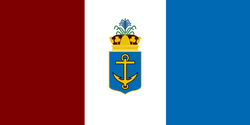 |
| Statistics |
|
| Key topics |
| Provinces |
|
Burgundie portal |
Argaea is part of the Burgoignesc Overseas Territory Assembly's Polar Burgundies geographic designation. Burgoignesc Overseas Territory Assembly is a constituent country equivalent of Burgundie with its own assembly, prime minister, budget, and laws. Burgundie's national governmental influence is limited to subsidies, education, and security, however, its financial and cultural institutes cast a long shadow across Argaea.
Argaea is a province within Burgoignesc Overseas Territory Assembly with its own semi-elected Governor-Epistates, representative legislative body, and court system.
Argaeans are Burgoigniacs/Burgoignix with complete civil and economic rights, and citizenship (political rights) under the same federal service criteria as all residents of Burgundie. Burgoignesc is the official language.
Provincial executive
The provincial executive is the Governor-Epistates. Three candidates are elected by a single transferable vote election held every 5 years, the three candidates are presented to the Court of St. Alphador and the next Governor-Epistates is chosen from these candidates. If the citizenry rejects the selection, a run-off election is held with the remaining two candidates.
Provincial legislature
Like the Citizens Court of the National Assembly (Burg. La Assemblee de Ciutadans de l'Assemblee Nacional, ACAN), The Argaean Citizen's Court of the Provincial Assembly is a unicameral legislator. It makes provincial law, has the power of the provincial purse, and has the power of impeachment, by which it can remove sitting members of the provincial government. The Assembly has three seats for each province, one for the Burgoignesc Overseas Territory Assembly's Argaea liaison, 3 for the clergy, 3 seats reserved for municipal leaders, and 3 for a rota of private business leaders. On 6 occasions throughout the year 3 more seats are opened to the public to debate topics that are not on the annual legislative agenda.
Administrative divisions and local governance
Military
Kiro-Burgoignesc_relations#Joint_Training_Exercise,_Operation_Snowblind Navy_of_Burgundie#Absurian_Australis_Command The Australis Dog Sled Patrol is an elite unit of the Navy of Burgundie. It conducts long-range reconnaissance patrolling, and enforces Burgoignesc sovereignty in the Australis wilderness of southern Argaea. Patrolling is usually done in pairs and using dog sleds with about a dozen dogs, sometimes for four months and often without additional human contact.
| TBD | |
|---|---|
| | |
| Site information | |
| Owner | Burgoignesc Security Forces |
| Operator | Navy of Burgundie |
| Controlled by | TBD |
| Condition | Operational |
| Site history | |
| Built | TBD |
| Garrison information | |
| Occupants | Navy
|
Emergency response
National Gendarmerie of Burgundie, Overseas Gendarmerie, Australis Command
Revenue Guard, Absurian Station
Society
| This article is part of a series on the |
| Culture in Burgundie |
|---|
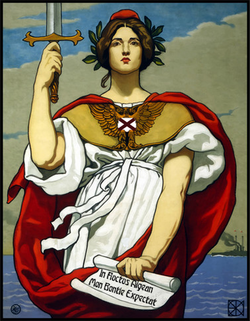 |
| Society |
| Arts and literature |
| Other |
|
Burgundie portal |
Religion, ethnicity, language, education, attitudes and worldview, kinship and family, cuisine, arts, literature, architecture, sports, symbols
Economy
Standard of living
Employment
Because Argaea's economy is a high-low mix of sectors from research to traditional agriculture, opportunities abound for Argaeans at all skill and education levels, which has helped the islands maintain a fairly steady unemployment rate of around X% for the last decade. Burgundie's high emphasis on education translates to a particularly educated and skilled workforce, leading to lower unemployment compared to less developed countries. The islands' economic diversity cushions against overreliance on any single industry, which has demonstrably made the island more resilient during downturns. Since Burgundie strives for Total Economic Engagement and espouses equal rights and opportunities regardless of gender, race, ethnicity, ability, or background, Argaea benefits from improved access to education and training, impacting employment prospects across various fields.
Tourism and hospitality
Funifor Arabba Porta Vescovo 2.jpg
Resorts
Cruises
Recreation
Key tourism and hospitality companies
Science and research
Argaea is the pre-eminent Burgoignesc scientific research area with over 75 laboratory and data analysis facilities, 97 research stations, and 4,390 weather monitoring stations. These are administered by the Burgoignesc Australis Program (Burg: Programme Australis Burgoignesc (PAB), Division of Polar Programs (Burg: Division des Programmes Polaire (DPP)) within the Royal Burgoignesc Society of Sciences (Burg: Societie Real Burgoignesc des Science (SRBS)).
The original permanent station was built by Seabees during November 1936, as a part of Burgundie's commitment to the scientific goals of creating a better maritime navigational system, which would ultimately lead to the creation of LORAN and the Automatic identification system. Through the Second Great War, the number of scientists, mathematicians, physicists, astronomers, and secretarial staff to do data collection and analysis exploded and by the wars end there were 43,400 people living on the remote islands. They almost all left after the war, with only the original botanists, marine biologists, and climatologists remaining. Many of the buildings were abandoned and succumbed to the environment. In the 50s, with the advent of the Occidental Cold War, Argaea became an ideal location to do secret research away from the prying eyes of Caphiria and its spy network. A number of top-secret projects were moved to Argaea and a network of bunkers were created as part of the continuity of government
The number of scientific researchers and members of the support staff housed at the Australis Station has always varied seasonally, with a peak population of about 200 in the summer operational season from October to February. In recent years, the winter-time population has been around 50 people.
Scientific Experiments
Starting immediately after the construction of the station in 1936, the teams of scientists started working on more accurate star charts and other astronomical recordings to use as a redundant navigation system. They also tested extreme cold weather conditions on food and equipment for the Burgoignesc Security Forces.
In 1942, the station became the hub for the secret LORAN program (the precursor to satellite navigation systems like GPS) that the Navy of Burgundie was very interested in developing. Known as Project SeaHawk, the development of LORAN became a priority for the Burgoignesc Security Forces at the waning days of the Second Great War, knowing the funding for such projects would be reduced dramatically at the war's end. The radio navigation system was completed in 1943 in the final days of the war and never saw combat operations, but it was employed ships and long range patrol aircraft of the Navy of Burgundie and used extensively. It was particularly useful for avisos whose role was undergoing a shift in the middle of the 20th century, being used as floating radio relays and therefore spending months adrift in the middle of the ocean. LORAN and after 1957 Loran-C, made these the positioning of the avisos and their radio relays increasingly accurate.
In September 1964, the scientists at Australis started ice coring, a practice they have continued approximately once a decade since then (1974, 1985, 1995, 2007, 2017, and 2027). The ice core samples have been used to examine historic snowfalls, ice melts, atmospheric carbon dioxide levels, radiation levels, average ambient temperatures, and have been used in the climate mapping project in conjunction with other stations and nations around the world.
In 2016, Argaea released its first finished project in the form of an international time database. The project helped synchronize time across all the nations in a standardized format and help synchronize all calendars that use the Argaean format. The calendar format was announced to Burgundie as the first finished project, and is now accepted by many nations as an acceptable standardized time format.
As of 2021, Argaea is working on a central database to store vital trade and economic information from all countries in a unified format. The project is still ongoing as of 2035 but is expected to be finished within the next decade.
The official maps of Burgundie are maintained by the Royal Burgoignesc Geological Survey and the Oceanographic, Atmospheric, and Cartographic Administration of Burgundie. Support for these maps is also provided by various branches of the Burgoignesc Security Forces, particularly the Revenue Guard and Defense Intelligence. All map originals are co-located in the Royal Archives and the Citizen's Court Library, and their electronic versions are kept both locally on 4 servers throughout Burgundie as well as on the natioanl backup servers in Argaea.
Argaean Seed Bank
The Argaea Global Seed Vault is a secure seed bank on Argaea. The World Food Programme started the vault to preserve a wide variety of plant seeds that are duplicate samples, or "spare" copies, of seeds held in other gene banks worldwide. The seed vault is an attempt to ensure against the loss of seeds in other genebanks during large-scale regional or global crises. The seed vault is managed under terms spelled out in a bi-lateral agreement between the Government of Burgundie and League of Nations.
The Government of Burgundie entirely funded the vault's approximately $8.8 million construction. Storing seeds in the vault is free to end users, with Burgundie paying for the majority of the banks operational costs.
Sports and leisure
There is a hockey team on Argaea, the Emperors, named for the penguins, based in Le Havre. Argea is also the home of the Burgoignesc Istoyan Winter Games Teams. The various skiing, bobsledding, luge, and hockey teams all are based in Argaea which is a huge draw for tourism. Their facilities are a major economic driver in the villages that they are situated in.
Trade
| Port Le Havre | |
|---|---|
| Location | |
| Country | |
| Details | |
| Opened | 1925 |
| Employees | 150 |
| Statistics | |
| Vessel arrivals | 79 |
| Annual cargo tonnage | 405.219 tonnes |
| Annual revenue | ₮9 million |
Infrastructure
Maritime
Due to the remoteness of the islands there are no commuter passenger ferries. However there are two ports of call for crusie ships, Le Havre and Lille on the eastern and western sides of Argaea Maior respectively. These ports of call are designed only for tourist use and all commuter travel is done by plane.
Lighthouses
Rail
Argaea uses Standard gauge, 1,435 mm (4 ft 8+1⁄2 in) for both freight and passenger rail.
There is no passenger rail in Argaea, there are about 1,384 km of rails used for freight for the research and industrial complexes. Due to the climate, all power is provided by the locomotives, there is no electrification of the rails. 543km of the rails are double track, there are no lengths of high-speed rail in Argaea.
Roads
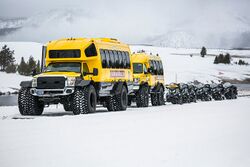
Car ownership is common in Wintergen but family units typically only have one car. Transit options exist for school and work so cars are used primarily for chores and housekeeping and visiting friends and family. Because of the cost of gasoline, personal vehicles are rarely people's first choice for transit. Argaea has 11,647 km (7237.11 mi) of roads, 8,480kms are improved. Most of the imporved roads are long haul routes connecting the sparse settlements. Almost all roads are owned and maintained by the provincial transit authority The Transportation Authority of Argaea (Burg:Authoritat de Transportacion de Argaea (ATA)), with the exception of the roads within Le Havre which has its own transportation authority who maintain the roads within the city limits of Le Havre. There is an inter-community bus system, also operated by the ATA that, in the summer, connects the disparate communities to Le Havre. In the winter, road buses are replaced by off-road buses and the frequency is cut dramatically.
Air
The Argaea International Airport and Air Base, outside of Le Havre, is a small, long haul airport facility that is shared by the civilian terminal and the Australis Task Section of the Royal Air Service of Burgundie, Revenue Guard, and Navy of Burgundie Hyperthalatton.
| Name | Location | Type | Brief description | Code(s) | Picture |
|---|---|---|---|---|---|
| Argaea International Airport and Air Base | Le Havre, Argaea, |
Passenger, cargo, and air base | 24/7/365 air traffic control operations, 2x runways, capable of receiving up to middle sized airframes, cargo terminal, passenger terminal, minimal maintenance facilities, integrated customs and border control service | ATRO: GAB
ICAO: BGRB |
Energy and electricity
The BORA Waste to Energy Compact went into effect in 2027 with construction of a Waste to Energy power plant starting in 2028. Two plants were built in Argaea generates approximately 208,000 kWh/day with a waste reduction capacity of 220,000 kg/day.
Phone service and internet
Phone service is provided by Island Mobile, and Landline service is available and is still popular with those who live in the rural parts of Nauta Normand. Because of the number and intensity of the broadcasting and receiving equipment used by the government, cellular service can be spotty at times when the government is using all of its apparatuses.
Highspeed internet service is provided by National Wireless Services a public-private ISP offered to areas of the Burgoignesc thalattocracy that don't have enough demand to create a competitive market. Residential internet speeds average 2 gigabits while commercial speeds are typically higher in the 3-4 gigabit range. National Wireless Services piggybacks on the Island Mobile towers and also has two towers of their own which provide highspeed wireless connections deep into the logging lands on the west of the island.
There are also two Global Maritime Distress and Safety System repeaters and a beacon on the islands.
See also
- Pages using duplicate arguments in template calls
- Pages with non-numeric formatnum arguments
- Incomplete articles
- Major Reconstruction
- Pages using infobox settlement with possible nickname list
- Pages using country topics with unknown parameters
- Burgundie
- Sub-national Regions in Burgundie
- Australis
- Islands
- Burgoignesc islands



